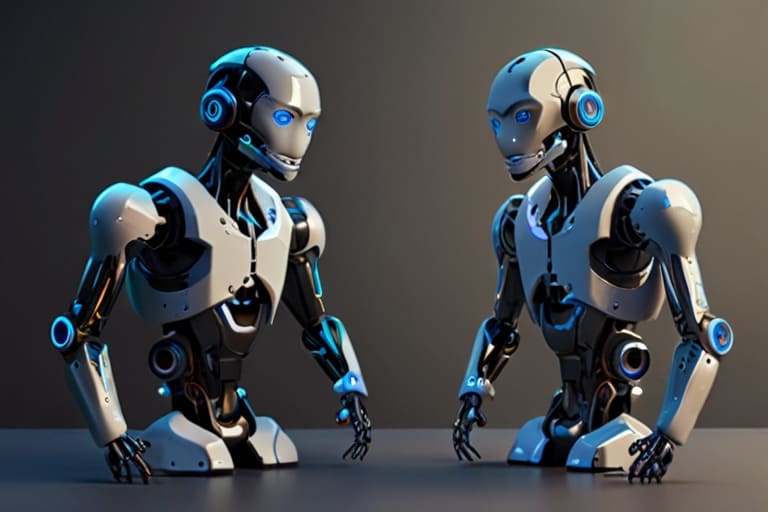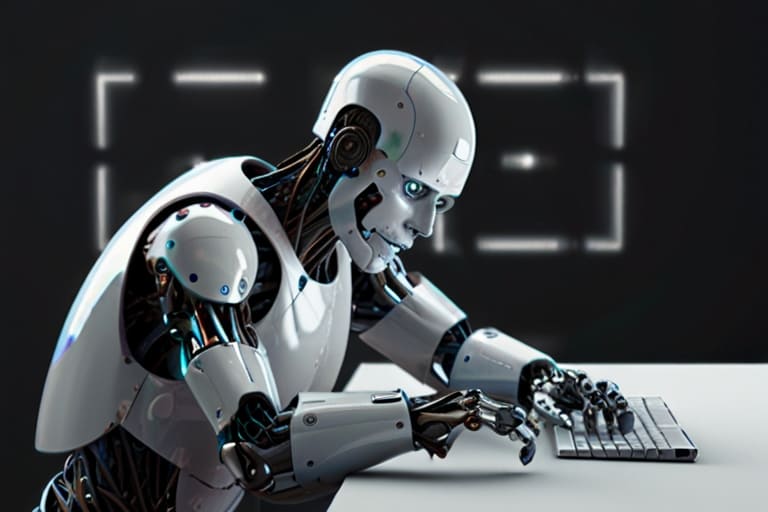Introduction
As we move closer to achieving Artificial General Intelligence (AGI), one of the most exciting frontiers is the automation of creativity and innovation. Imagine a world where virtual beings, powered by advanced AI, can generate new ideas, create content, and even peer-review each other’s work—all without human intervention. This vision of a fully automated research and creative process is no longer science fiction. In this article, we explore how this automation could reshape our future and bring us closer to achieving AGI.
Table of Contents
- The Vision of Fully Automated Research
- How Virtual Researchers Generate New Ideas
- Automating the Creative Process
- Peer Review by AI: A New Era of Evaluation
- Overcoming Challenges and Limitations
- Ethical Considerations and the Path Forward
1. The Vision of Fully Automated Research
One of the most ambitious goals in the field of AI is to create systems that can independently conduct research, generate new knowledge, and push the boundaries of innovation. Traditionally, AI has been used to assist human researchers, but the future points towards AI taking the lead in these processes. By excluding humans from the loop, we could see a significant acceleration in the rate of discovery and innovation, bringing us closer to achieving AGI.
2. How Virtual Researchers Generate New Ideas
Imagine an AI system that functions as a virtual researcher. This system can scan vast amounts of existing knowledge, identify gaps, and propose new research ideas. Just like a human scientist, the AI can brainstorm and generate novel concepts. For example, it might explore unexplored areas of content creation, develop new techniques in art, or even propose revolutionary theories in science.
The virtual researcher starts with a simple codebase or a set of guidelines. From there, it autonomously navigates through a web of possibilities, combining and recombining ideas to create something entirely new. The process is iterative, with the AI continuously refining its ideas based on feedback and previous outcomes.
3. Automating the Creative Process
Once the virtual researcher has generated a new idea, the next step is to bring it to life. This could involve writing a new piece of content, designing an artwork, or developing a new scientific theory. The AI uses advanced algorithms and models to execute these tasks, all without human intervention.

For instance, an AI system could write an entire book, compose music, or even create a series of paintings. It can also conduct experiments, analyze data, and draw conclusions, much like a human scientist would. The AI’s ability to automate the creative process opens up new possibilities for innovation and discovery.
4. Peer Review by AI: A New Era of Evaluation
In the current research process, peer review is essential for ensuring the quality and credibility of new work. However, this is often a time-consuming and subjective process. By automating peer review, AI can provide faster, more consistent evaluations.
A virtual peer reviewer, powered by AI, can evaluate new content or research with near-human accuracy. It can assess the originality of the work, check for errors, and provide constructive feedback. This automated peer review process ensures that only the most robust and innovative ideas move forward, helping to advance the field more efficiently.
5. Overcoming Challenges and Limitations
While the potential of fully automated research and creativity is immense, there are still challenges to overcome. Current AI systems may struggle with complex tasks that require deep understanding or creativity. They may also make mistakes in interpreting data or generating content.
For example, an AI might produce content that is technically correct but lacks the nuance or creativity of a human touch. Similarly, automated peer review systems might miss subtle flaws or fail to appreciate groundbreaking ideas. However, as AI technology continues to advance, these limitations are likely to diminish.
6. Ethical Considerations and the Path Forward
As we move closer to achieving AGI, it is crucial to consider the ethical implications of excluding humans from the research and creative processes. While automation can lead to faster innovation, it also raises questions about the role of human creativity and judgment in a world dominated by AI.
We must ensure that as we develop these technologies, we do so with a focus on safety, transparency, and fairness. The path forward involves not only advancing AI capabilities but also addressing the ethical challenges that come with it.
Conclusion
The journey towards AGI is not just about building smarter machines; it’s about fundamentally reshaping how we approach creativity, research, and innovation. By automating these processes and creating virtual researchers, we are taking significant steps towards a future where AGI could become a reality. As we continue to explore these possibilities, the potential for groundbreaking discoveries and innovations is boundless.

Leave a Reply